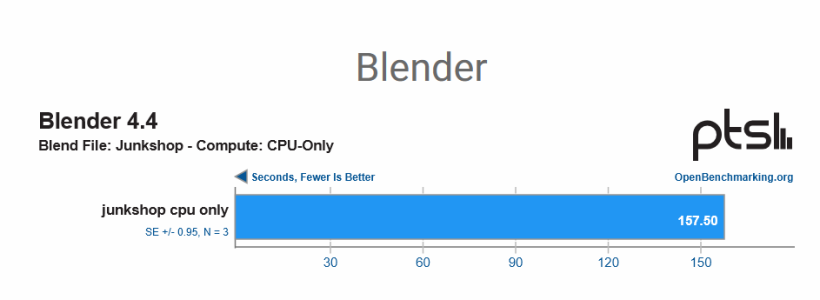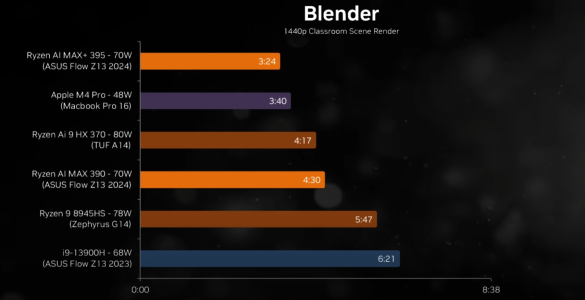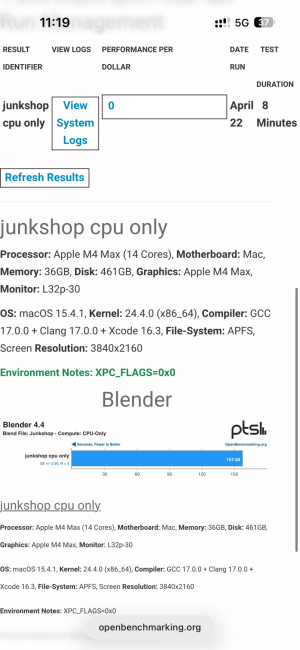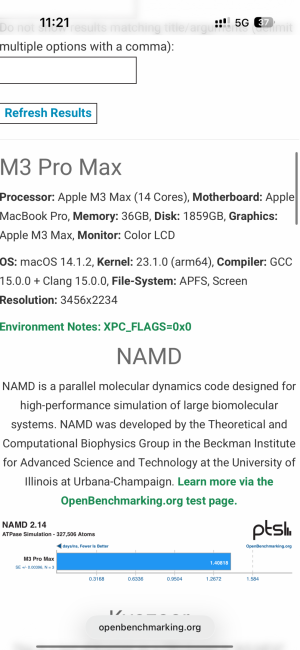no it can't. It only does so by pounding it with 2x the power.
... and who cares again? Explain why power should enter into an outright performance discussion?
How is the Apple M4 urach not better when Apple is only losing by 64% but AMD has 2x P cores and 2x the threads?
The NODE advanatge does NOT give apple this big of a lead.
It is losing .... full stop. It is just insult to injury that it is losing AND likely cost more to manufacture AND has a node process advantage.
You seem to be fixated on the number of cores. That's kind of silly in this day and age.
You buy processor X for some price and it performs at some level and processor Y for another price and it performs at another level. This is how the consumer sees it.
For the company, it cost X to produce processor 1 and I make this much on each one and it costs Y to produce processor 2 and I make something different.
These are the only things that matter.
I can't speak for others but I've never claimed ARM is fundamentally superior to x86. I've even argued that x86's more complex instruction decoding doesn't make any real difference power wise in the era of billion transistor chips because that additional transistors that requires are such a tiny portion of a modern core.
But a lot of people here seem to trying to argue that ARM cores in general, or Apple's in particular, are somehow unsuitable for DC. That's ridiculous on its face. No one can point to a benchmark that shows Apple cores as not being appropriate for DC tasks. Test x number of Apple P cores against the same number of x86 cores P cores and unless you're talking tasks that "just happen" to be all about AVX512 (or alternatively all about SVE2) you can't find any big difference in either direction. The only thing people can point to is "well x86 scales up to 192 cores and Apple doesn't" trying to imply that this is proof that Apple can't. That's just ignorant reasoning. It is the exact same reasoning people used to use claiming Apple's cores weren't appropriate for PCs, because Apple was only using them in phones.
Assuming Qualcomm's next gen cores are competitive with Apple's (I think likely to be better since it appears Qualcomm will be binning on frequency) and they start selling server chips as rumored then we'll have a good comparison - the same ARM cores being used in both phones and servers. People will have to stop lying that ARM and/or Apple's cores are somehow unsuitable for DC loads. Well maybe they'll still try to claim that about Apple's cores despite the evidence from Qualcomm's cores, because they just can't help themselves, but they'll be hanging on by the thinnest of threads.
That is a quite fair assessment of x86's "extra" decode into RISC like equal length instructions .... I agree.
M4 core itself is hard to prove one way or another that it would perform as well as Zen 5 in DC since no platform exists to test the theory. I SUSPECT that it would not perform as well simply because that is NOT what it was designed for. Zen 5 (and several previous generations) have been specifically architected "Server First" (AMD's quote, not mine). It is therefore likely that M4 wouldn't fare well in such a contest.
On the flip side, Zen 5 wouldn't work well at all in a phone or tablet.
To date, this is the only ARM vs Zen 5 benchmark in DC I have seen:

www.phoronix.com
It didn't look very flattering for ARM.
View attachment 128130
we have the full blown M4 Pro here with 10P+4E/14 threads here against Strix Halo. AMD here has 60% more P cores and 32 threads here. Yet the difference is in scene completion is 5%.
How is Zen5 on N3E going to make up for that?
Let me put this way, if Intel had a uArch that is 5% slower and used much less power but it had 10P+4E with 14 threads compared to AMDs 16c/32t, the industry would go nuts.
I have definitely never said M4 was not good at anything. It does well at Blender, yet even then, it does so with a full node advantage .... and still loses to a Zen 5 part that likely costs less to make.
BTW, I also wonder how important memory bandwidth is to the Blender CPU benchmark. M4 Max has a huge memory bandwidth advantage that may well aid it significantly rendering a 1440p scene.







